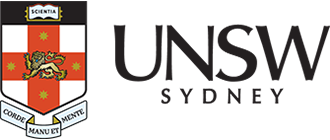Thermo Orbitrap Velos ETD

Description
The Orbitrap Velos ETD is a hybrid instrument that incorporates both Orbitrap and linear ion trap mass analysers; both 1D and 2D nano liquid chromatography (LC) separations can be interfaced to this instrument. This platform allows the benefits of Orbitrap mass analysis to be exploited in highly sensitive experiments.
Detailed insights into analyte molecule structural characteristics can be obtained via tandem and multiple stage mass spectrometry (MS/MS and MSn) experiments, in which various methods of ion activation may be utilised. Analyses are frequently performed upon complex peptide mixtures generated via the enzymatic or chemical hydrolysis of proteins, allowing confident protein identifications to be readily made at low fmol levels.
Quantitative analyses are possible via, for example, the isobaric labelling of peptides. Detailed characterisations of post-translational modifications (PTMs) are capable of being achieved via the various modes of ion activation available during MS/MS. In this regard, subjecting analyte peptides to Electron Transfer Dissociation (ETD) can be particularly useful: labile PTMs are left intact whilst structural information is obtained via peptide bond fragmentation.
Specifications
-
- Low flow liquid chromatography system
- Flow rate range: 50 nL/min to 50 µL/min
-
- Mass Range:
- Standard: m/z 50–2,000
- Extended: m/z 200–4,000
- Resolution:
- 60,000 at m/z 400 at a scan rate of 1 Hz
- Maximum resolution: 100,000 at m/z 400
- Mass Range:
Applications
- Bottom-up proteomics
- Quantitative proteomics
- ETD (Electron Transfer Dissociation) experiments
- Post-Translational Modification (PTM) studies
Instrument location
Bioanalytical Mass Spectrometry Facility
Wallace Wurth Building (C27)
UNSW Sydney, NSW 2033
Phone: 02 9385 1717
Email: bmsf@unsw.edu.au
Dr Valerie Wasinger
-
Phone
02 9385 1678 -
Email
v.wasinger@unsw.edu.au
Dr Ling Zhong
-
Phone
02 9385 2717 -
Email
l.zhong@unsw.edu.au
Parent facility
Explore more instruments, facilities & services
Our infrastructure and expertise are accessible to UNSW students and staff, external researchers, government, and industry.




